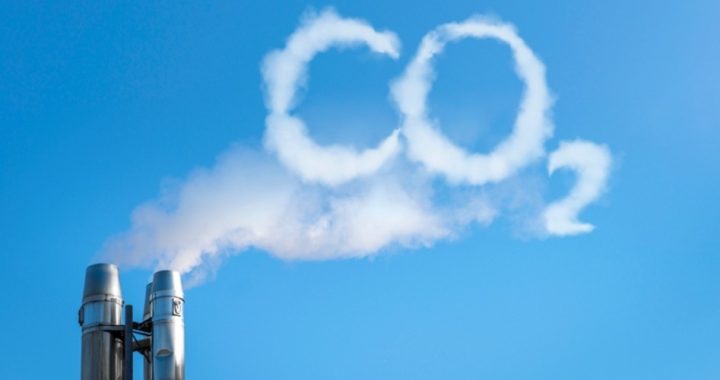
In a finding filed with the U.S. District Court for Oregon on April 8, U.S. Magistrate Judge Thomas Coffin denied the federal government’s motion to dismiss a lawsuit filed against “the United States and various government officials” by a group of children and young people eight-19 years of age who asserted that they have been harmed from excessive carbon emissions.
Dr. James Hansen — a discredited NASA climatologist and “grandfather” of the anthropogenic (manmade) global warming lobby, participated in the suit as a guardian for plaintiffs and for “future generations.” Hansen has called for prosecution of climate-catastrophe skeptics for “high crimes against humanity.”
The original lawsuit, Kelsey Cascade Rose Juliana; et al., Plaintiffs, v. The United States of America; et al., Defendants (Juliana v. U.S.), named an interesting list of defendants that included (among others) President Obama, the secretaries of Energy, Interior, Transportation, Agriculture, Commerce, and Defense, EPA Administrator Gina McCarthy, the National Association of Manufacturers, American Fuel & Petrochemical Manufacturers, the American Petroleum Institute, and the Global Catholic Climate Movement and Leadership Council of Women Religious. Many of the plaintiffs were represented by Julia A. Olson of an organization called Wild Earth Advocates, and attorneys from two separate law firms.
In his summary of the case when it was originally filed, Judge Coffin noted that the plaintiffs included a group of younger individuals who “assert harm from carbon pollution because of government action and/or inaction allegedly resulting in climate destabilization and ocean acidification.” “Also among the plaintiffs,” he noted, “are associations of activists who assert they are beneficiaries of the federal public trust harmed by allegedly substantial impairment and alienation of their public trust resources through ongoing actions to allow fossil fuel exploitation.”
In a summary of his finding, Hansen noted that the plantiffs had apparently gone where few others have by declaring that “Defendants have violated and are violating Plaintiffs’ fundamental constitutional rights to life, liberty, and property by substantially causing or contributing to a dangerous concentration of C02 in the atmosphere, and that, in so doing, Defendants dangerously interfere with a stable climate system required by our nation and Plaintiffs alike.”
A Columbia University climate law blog post on January 11 noted that the federal government had “moved to dismiss an action brought by 21 individuals, all aged 19 or younger, to compel federal government defendants to take action to reduce carbon dioxide emissions so that atmospheric CO2 concentrations will be no greater than 350 parts per million by 2100.”
The blog summarized the government’s contention that the plaintiffs lacked standing because they had not alleged a particularized harm that was traceable to the defendants’ actions. Among other objections that the federal government cited in asking the court to dismiss the lawsuit were:
• The alleged injuries were not redressable and the plaintiffs’ claims raised separation of powers issues.
• The vague, unnamed “Future Generations” listed as plantiffs had alleged no injury in fact.
• The plaintiffs had not stated a constitutional claim.
• The federal courts lack jurisdiction over public trust doctrine lawsuits because such claims arise under state law.
In addition to the federal government, the National Association of Manufacturers, the American Fuel & Petrochemical Manufacturers, and the American Petroleum Institute all joined in filing a memorandum in support of “intervenor-defendants’ motion to dismiss” the lawsuit last November 12.
Among the arguments made in that motion were:
While the plaintiffs maintain that the public trust doctrine arises as a matter of federal law, the Supreme Court — along with every other court to consider the issue — has said precisely the opposite, recognizing that the doctrine “do[es] not depend upon the Constitution” but rather “remains a matter of state law,” with no application to the federal government.
The motion also noted, near its conclusion:
Federal agencies can regulate greenhouse gas emissions only as Congress authorizes; their regulations are reviewable in court only through the procedures that Congress has established. There is “no room for a parallel track.”
Thought the argument presented by the NAM and the other defendants seemed reasonable, Judge Coffin apparently disagreed. He stated in rendering his decision that the case represented an “unprecedented lawsuit” addressing “government action and inaction” resulting “in carbon pollution of the atmosphere, climate destabilization, and ocean acidification.”
Coffin wrote, in part:
The debate about climate change and its impact has been before various political bodies for some time now.
Plaintiffs give this debate justiciability by asserting harms that befall or will befall them personally and to a greater extent than older segments of society. It may be that eventually the alleged harms, assuming the correctness of plaintiffs’ analysis of the impacts of global climate change, will befall all of us. But the intractability of the debates before Congress and state legislatures and the alleged valuing of short term economic interest despite the cost to human life, necessitates a need for the courts to evaluate the constitutional parameters of the action or inaction taken by the government. This is especially true when such harms have an alleged disparate impact on a discrete class of society.
In the above wording, Coffin bases the “need for the courts to evaluate the constitutional parameters of the action or inaction taken by the government” on the assumption that an “analysis” put together by a group of children and teenagers about the “impacts of global climate change” is a more valuable yardstick for the courts to evaluate the constitutionality of the alleged actions/inactions of multiple government agencies than not only these agencies, but several prestigious private industrial associations, including the National Association of Manufacturers!
And that fails to take into account that even among the scientific community, the issue of whether climate change is the result of human activity or is simply a naturally reoccurring cyclical event, is far from settled.
In statement emailed to PJ Media, H. Sterling Burnett, who holds a Ph.D in environmental ethics and is a research fellow at the Heartland Institute, said about this case: “This is purely political — a liberal judge putting his personal opinions on climate change above the law he is supposed to uphold and defend. The Obama administration has gone around our elected representatives to enact draconian restrictions on greenhouse gas emissions, yet for these kids that’s not enough.”
Burnett further stated that this case “should have been thrown out of court based on lack of standing,” since the children “can’t show they have or are or will be harmed by human caused climate change, and because burning fossil fuels does not violate any portion of the Constitution or the bill of rights,” as they claim it does. Rather, burning oil and gas “contributes greatly to life, the pursuit of happiness, and the general welfare.”
At the conclusion of his decision, Coffin said that the court should deny the motions by the government and the private parties to dismiss the lawsuit. He granted the parties to the suit fourteen days to file specific written objections with the court, after which the opposing parties shall have another fourteen days within which to file a response to the objections.
Given the bizarre nature of this case, and the fact that the defendants include both high government officials and several influential private manufacturing associations, it is almost certain that Coffin’s ruling will be appealed.
Related Articles:
Alarmist Prosecutor Demands E-mails from Climate Skeptics
What’s the Real Agenda Behind Climate-change Alarmism?
New Study: Humans Releasing Carbon 10X Faster than Past 66 Million Years
DOJ Has “Discussed” Referring “Climate Denial” Cases to the FBI
Global Warming Satellite Data Gets Suspicious Makeover
U.S. Science Teachers Disregard Unproven Global-warming Theory
Greenpeace Co-Founder: Climate Alarmists Would Kill Civilization
Supreme Court Stays EPA’s Enforcement of the Obama “Clean Power Plan”
Climate Costs Estimated at More Than $12 Trillion for U.S. Taxpayers
Asian Freeze Adds to Doubt on Reality of Global Warming
Massive Winter Storm Blows Cold Air on Alleged Global Warming
Hotter and Hotter? NASA and NOAA Claim Hottest Year Despite Evidence
2015: The Climate Record that Wasn’t
Shedding Light on the Global Green Agenda
Disarming the Alarmists: Climate-change Myth Takes Three More Hits
Climate Alarmists Have Been Wrong About Virtually Everything
Earth Is Cooling, Sea Levels Not Rising, Scientists Say
NASA Study Showing Massive Ice Growth Debunks UN Claims
Confab of Climate Experts to Challenge Global Warming “Consensus”
Was 2012 the Hottest Year? Alarmists Blowing Hot Air Again
Climate-change Computer Models Fail Again — and Again, and Again
Media Meltdown Over Antarctic Basin
Greenland’s Not-So-Rapidly Flowing Glaciers
Forget Global Warming; COLD Kills
Heat or Cold: Which Is More Deadly?
Global-warming Alarmism Dying a Slow Death
Arctic Ice Expanding, Not Retreating


